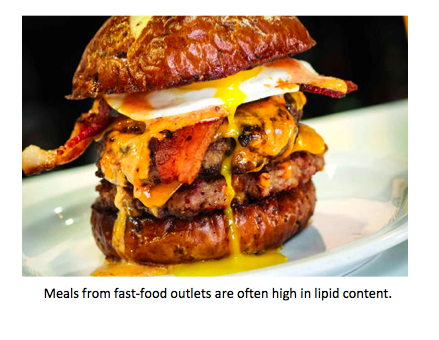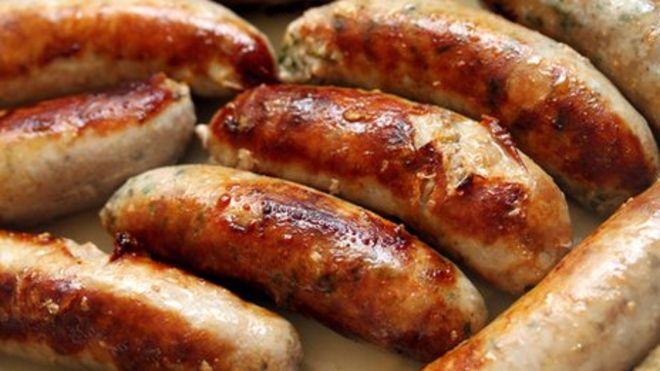B.3 Lipids
Written specifically for students to provide help and support for the IB Diploma chemistry programme this page provides full coverage of the syllabus content of Option B - sub topic B.3. It encourages you to think critically and provides many questions with full worked answers so that you can monitor and improve your knowledge and understanding.


 Learning outcomes
Learning outcomes
After studying this topic you should be able to:
 Understand:
Understand:
- Fats, which are more reduced, produce more energy than carbohydrates when they are oxidized.
- Triglycerides contain ester links and are formed by the condensation reaction between glycerol and three fatty acids.
- Fatty acids can be saturated, monounsaturated or polyunsaturated.
- Phospholipids are derived from triglycerides.
- The hydrolysis of triglycerides and phospholipids can occur in alkaline or acidic conditions or by using enzymes.
- Steroids possess a characteristic fused 4-membered ring structure, known as a steroidal backbone.
- The role of lipids includes acting as structural components of cell membranes, as transporters of lipid soluble vitamins, as hormones and in energy storage and thermal and electrical insulation.
Apply your knowledge to:
- Deduce the structural formulas of reactants and products in condensation and hydrolysis reactions between glycerol and fatty acids and/or phosphate.
- Predict the relative melting points of fats and oils from their structures.
- Compare the processes of hydrolytic and oxidative rancidity in fats with respect to the site of reactivity in the molecules and the conditions that favour the reaction.
- Apply the concept of iodine number to determine the unsaturation of a fat.
- Compare carbohydrates with lipids as energy storage molecules with respect to their solubility and energy density.
- Discuss the impact of lipids on health, including the roles of dietary high-density lipoprotein, HDL, and low-density lipoprotein, LDL, cholesterol, saturated, unsaturated and trans-fat and the use and abuse of steroids.
Relationships & vocabulary
Nature of science
Long-term studies have led people to believe that diets high in saturated fat, cholesterol, and trans-fat have negative effects. This has led to the development of new food products.
International-mindedness
The dietary sources of lipids and the methods used to prevent rancidity vary greatly between countries and cultures.
Vocabulary
| triglyceride | phospholipid | high density lipoprotein, HDL | iodine number |
| essential fatty acid | trans-fatty acid | low density lipoprotein, LDL | omega-3 and omega-6 |
Learning slides
You can use this slide gallery for learning or for reviewing concepts and information. It covers all the key points in the syllabus for this sub-topic.
Something to think about
Are saturated fats bad for your heath?

There is real scope for both Nature of Science and Theory of Knowledge in discussing the question, ‘Are saturated fats bad for you?’ For the past forty years the advice from governments and reputable medical bodies has been to consume unsaturated fats rather than saturated fats, as saturated fats lead to heart disease. Even the Nature of Science statement as written in the Guide for this sub-topic states, “Long–term studies have led to knowledge of the negative effects of diets high in saturated fats”.
The advice was based initially on the evidence of work published in 1958 by Ancel Keys in the Seven Countries Study. It found a correlation between saturated fat intake and heart disease. There is now considerable doubt about these findings. Some people claim that in fact twenty-two countries were studied and all the results that did not fit the correlation were ignored. Many studies during the past fifty years have come up with conflicting views and yet the mantra that saturated fats are ‘bad’ for you has persisted.
Several recent meta studies have cast serious doubt on whether saturated fats are bad for you. In 2014 a meta study of 72 published papers involving more than 600,000 participants worldwide produced the conclusion:
“Current evidence does not clearly support cardiovascular guidelines that encourage high consumption of polyunsaturated fatty acids and low consumption of total saturated fats.”
A similar meta-study published in Open Heart, produced by the British Cardiovascular Society, looking at reports of trials before 1983 concludes:
"Dietary recommendations were introduced for 220 million US and 56 million UK citizens by 1983, in the absence of supporting evidence from RCTs (randomized controlled trials).
The debate continues!
Test your understanding of this topic
(Note that your teacher may have restricted your access to some or all of these questions and worked answers if they are going to use them as a class test or set them as an assignment.)
For ten 'quiz' questions (for quick testing of knowledge and understanding with the answers explained) see MC test: Lipids.
For short-answer questions see Lipids questions together with the worked answers on a separate page Lipids answers.
More resources
1. A good video by Bozeman Science on lipids.
2. A really nice video from Applied Science on the hydrogenation of fats. It explains the different types of fats and oils and shows practically how unsaturated fats can be hydrogenated. It also discusses the problems associated with trans fats. (Many thanks to Phil Tuckey a subscribing chemistry teacher from the International Christian School of Vienna who alerted me to this video).
3. A simple PowerPoint from Wisc-Online that you may find helpful.
4. A factual video on hydrolytic and oxidative rancidity by MSJChem.
![]() Hydrolytic and oxidative rancidity
Hydrolytic and oxidative rancidity

 IB Docs (2) Team
IB Docs (2) Team 




















